Krishna Janmashtami 2023: There is confusion about the correct date to celebrate Krishna Janmashtami 2023. Find out when to celebrate Krishna Janmashtami and the Shubh Muhurat. Meanwhile, Janmashtami marks Lord Krishna’s birth anniversary. On this day, devotees of Lord Krishna worship his toddler form, called Bal Gopal and Laddu Gopal. According to Vedic chronology, this year will mark Lord Krishna’s 5250th birthday.
People will celebrate the day by visiting temples, observing fasts, decorating their homes, preparing delectable dishes, dressing up the idol of Lord Krishna, and more. The festival is marked across the country. However, the biggest celebrations take place in Mathura and Vrindavan, where Krishna is believed to have been born and spent his growing up years, respectively.
The holy festival of Janmashtami is celebrated annually with much pomp across the nation. Also known as Gokulashtami, Shrikrishna Jayanti, Krishnasthami, and Krishna Janmashtami, the festival falls on the Ashtami Tithi of Krishna Paksha in the month of Bhadrapad. However, this year, there is confusion around the accurate date for the celebrations. Lord Krishna’s devotees are confused about whether to mark Janmashtami on September 6 or 7 this year.
Krishna Janmashtami 2023
Krishna Janmashtami is marked on the eighth day of the dark fortnight in the month of Bhadrapada. Hindu mythology states that Krishna was born in the Rohini Nakshatra on this day. According to Drik Panchang, Janmashtami will fall on consecutive days this year because Rohini Nakshatra and Ashtami Tithi are falling during the night on Janmashtami. While Ashtami Tithi will start at 3:37 pm on September 6 and end on September 7 at 4:14 pm, Rohini Nakshatra will begin at 9:20 am on September 6 and conclude at 10:25 am on September 7.
Thus, Janmashtami will be observed on both days. While Janmashtami is on September 6, Dahi Handi celebrations will take place on September 7.
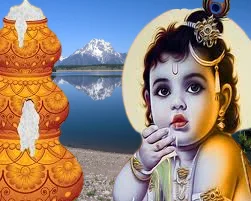
Janmashtami 2023 Shubh Muhurat:
According to Drik Panchang, the Nishita Puja time is from 11:57 pm to 12:42 am on September 7. Thus, the auspicious time for the worship on Janmashtami starts at 11:57 pm. The birth anniversary and worship of Laddu Gopal will be till 12.42 midnight. The Parana time will be at 4:14 pm on September 7.
Meanwhile, Janmashtami marks Lord Krishna’s birth anniversary. On this day, devotees of Lord Krishna worship his toddler form, called Bal Gopal and Laddu Gopal. According to Vedic chronology, this year will mark Lord Krishna’s 5250th birthday. People will celebrate the day by visiting temples, observing fasts, decorating their homes, preparing delectable dishes, dressing up the idol of Lord Krishna, and more.
The festival is marked across the country. However, the biggest celebrations take place in Mathura and Vrindavan, where Krishna is believed to have been born and spent his growing up years, respectively.
| Janmashtami Dates Yearwise | ||
| YEAR | Janmashtami Date | Janmashtami Day |
| 2023 | 6 Sep | Wed |
| 7 Sep | Thu | |
| 2024 | 26 Aug | Mon |
| 2025 | 16 Aug | Sat |
| 2026 | 4 Sep | Fri |
| 2022 | 18 Aug | Thu |
| 19 Aug | Fri | |
| 2021 | 30 Aug | Mon |
| 2020 | 11 Aug | Tue |
| 12 Aug | Wed | |
| 2019 | 24 Aug | Sat |
| 2018 | 3 Sep | Mon |
| 2017 | 14 Aug | Mon |
| 15 Aug | Tue | |
Janmashtami
Krishna Janmashtami, also known simply as Krishnashtami, Janmashtami, or Gokulashtami, is an annual Hindu festival that celebrates the birth of Krishna, the eighth avatar of Vishnu. In certain Hindu texts, such as the Gitagovinda, Krishna has been identified as supreme God and the source of all avatars. Krishna’s birth is celebrated and observed on the eighth day (Ashtami) of the dark fortnight (Krishna Paksha) in Shravana Masa (according to the amanta tradition) or Bhadrapada Masa (according to the purnimanta tradition). This overlaps with August or September of the Gregorian calendar.
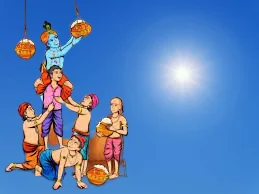
The meaning of the sanskrit word “janmashtami” can be understood by splitting it into the two words, “janma” and “ashtami.” The word “janma” means birth and the word “ashtami” means eight; thus, Krishna Janmashtami is the celebration of Krishna’s birth on the eighth day of the dark fortnight (Krishna Paksha) in the month of Bhadrapada (August–September).
Celebrated by 930 million people all around the world, it is a holiday that brings spiritual renewal and the celebration of new beginnings and a fresh new year. The holiday sits in the Hindu month of Sravana, and the holiday lasts for two days. The celebrations begin at midnight, the time when Krishna is thought to have been born in 3228 BC.
Krishna is one of the most important and loved deities in Hinduism because he is the embodiment of divine joy and love. He was born and entered the world to establish the religion of love. Krishna’s love is universal, and he is often shown as playing a flute and standing near a sacred cow.
Krishna survived many mortal dangers throughout his life, and he is celebrated for his intellect as well as his strength and agility. Krishna is not loved only for being a divine teacher, but also because he signifies lighting the fire of Divine Power that exists within everyone.
This Divine Power is what sends people out to play their part in the world while maintaining their sense of spiritual purpose. It is in his love, inspiration and wisdom that Krishna is a source of divine joy.
The celebrations of Janmashtami are passionate, and many people move through the two-day celebration without sleep. They sing, dance and some choose to feast on traditional festival foods while others choose to fast until the birth of Krishna Janmashtami at midnight. Special foods are prepared in celebration, and they reflect the foods that Lord Krishna was fond of.
Many people make sweets like Doodhachi Kheer, Gopal Kala and Gulab Jamon to celebrate the birth of Krishna and the spiritual renewal he brings. People all over India celebrate and get lost in song, dance and praise of Lord Krishna. Celebrations often include the Raslila, which is a drama that re-enacts scenes of Krishna’s life through joyous dance.
Many communities, especially those in Mumbai, also participate in Dahi Handi, a ritual in which people form a human pyramid to break the Handi, or Earthen Pot, which is being suspended by a rope.
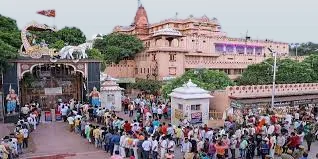
In Dwarka, the city in which Krishna spent most the life, the entire city is decorated to welcome the pilgrims who arrive for the festival. Dwarka means “door to salvation,” and Lord Krishna worked with his brother to establish this city and its palaces made of gold, rubies, emeralds and diamonds.
After Krishna’s death, it is said that the city was lost and submerged in the water. The events in Dwarka are some of the most exuberant and famous in all of India. The festival is organized according to the daily routine of Lord Krishna, and it begins with a performance of the mangala aarti.
Afterward, devotees offer Lord Krishna banta bhog, or milk products, and then Lord Krishna is given a bath between 8 and 10 in the morning. After the bath, Lord Krishna is dressed in yellow colored clothes and ornaments made of flowers. Following his adornment, Lord Krishna is again made available for devotees to perform darshans, and in the evening, the nagla arti is performed again and once again, Lord Krishna is offered his favorite sweets.
Janmashtami is one of the most vibrant holidays in Hinduism and is celebrated in honor of the birth of one of the most loved deities. Pilgrims flood holy places and temples and the cities are lit up while the kirtans and bhajans are sung by loyal devotees in order to celebrate one of the most beloved holidays in India.
Krishna Janmashtami Puja Vidhi
We are giving detailed Krishna Janmashtami Puja Vidhi which is observed on Krishna Janmashtami day. The given Puja Vidhi includes all sixteen steps which are part of Shodashopachara (षोडशोपचार) Krishna Janmashtami Puja Vidhi.
1. Dhyanam (ध्यानम्)
Puja should begin with the meditation of Lord Krishna. Dhyana should be done in front of already installed Lord Krishna statue in front of you. Following Mantra should be chanted while meditating on Lord Shri Krishna.
Om Tamadbhutam Balakam Ambujekshanam Chaturbhuja Shankha Gadadyudhayudam।
Shri Vatsa Lakshmam Gala Shobhi Kaustubham Pitambaram Sandra Payoda Saubhagam॥
Maharha Vaidhurya Kiritakundala Tvisha Parishvakta Sahasrakundalam।
Uddhama Kanchanagada Kanganadibhir Virochamanam Vasudeva Ekshata॥
Dhyayet Chaturbhujam Krishnam, Shankha Chakra Gadadharam।
Pitambaradharam Devam Mala Kaustubhabhushitam॥
Om Shri Krishnaya Namah।
Dhyanat Dhyanam Samarpayami॥
2. Avahanam (आवाहनं)
After Dhyana of Lord Krishna, one should chant following Mantra in front of the Murti, by showing Aavahan Mudra (Aavahan Mudra is formed by joining both palms and folding both thumbs inwards).
Om Sahasrashirsha Purushah Sahasrakshah Sahasrapat।
Sa Bhumim Vishvato Vritva Atyatishthaddashangulam॥
Agachchha Devadevesha Tejorashe Jagatpate।
Kriyamanam Maya Pujam, Grihana Surasattame॥
Avahayami Deva Tvam Vasudeva Kulodbhavam।
Pratimayam Suvarnadinirmitayam Yathavidhi॥
Krishnam Cha Balabadhram Cha Vasudevam Cha Devakim।
Nandagopa Yashodam Cha Subhadram Tatra Pujayet॥
Atma Devanam Bhuvanasya Garbho Yathavasham Charati Deveshah।
Ghosha Idasya Shrnvire Na Rupam Tasmai Vatayahavisha Vidhema॥
Shri Kleem Krishnaya Namah, Saparivara Sahita,
Shri Balakrishnam Avahayami॥
3. Asanam (आसनं)
After Lord Krishna has been invoked, take five flowers in Anjali (by joining palm of both hands) and leave them in front of the Murti to offer seat to Shri Krishna while chanting following Mantra.
Mantra:
Purusha Evedagam Sarvam Yadbhutam Yachchha Bhavyam।
Utamritatvasyeshanah Yadannenatirohati॥
Rajadhiraja Rajendra Balakrishna Mahipate।
Ratna Simhasanam Tubhyam Dasyami Svikuru Prabho॥
Om Shri Balakrishnaya Namah।
Asanam Samarpayami॥
4. Padya (पाद्य)
After offering seat to Lord Krishna offer Him water to wash the feet while chanting following Mantra.
Etavanasya Mahima Ato Jyayaganshcha Purushah।
Padoasya Vishva Bhutani Tripadasyamritam Divi॥
Achyutananda Govinda Pranatarti Vinashana।
Pahi Mam Pundarikaksha Prasida Purushottama॥
Om Shri Balakrishnaya Namah।
Padoyo Padyam Samarpayami॥
5. Arghya (अर्घ्य)
After Padya offering, offer water to Shri Krishna for head Abhishekam while chanting following Mantra.
Tripadurdhva Udaitpurushah Padoasyehabhavatpunah।
Tato Vishvangvyakramat Sashananashane Abhi॥
Paripurna Parananda Namo Namo Krishnaya Vedhase।
Grihanarghyam Maya Dattam Krishna Vishnorjanardana॥
Om Shri Balakrishnaya Namah।
Arghyam Samarpayami॥
6. Achamaniyam (आचमनीयं)
After Arghya offering, offer water to Shri Krishna for Achamana (water for sipping) while chanting following Mantra.
Tasmadviradajayata Virajo Adhi Purushah।
Sa Jato Atyarichyata Pashchadbhumimatho Purah॥
Namah Satyaya Shuddhaya Nityaya Jnana Rupine।
Grihanachamanam Krishna Sarva Lokaika Nayaka॥
Om Shri Balakrishnaya Namah।
Achamaniyam Samarpayami॥
7. Snanam (स्नानं)
After Achamana, offer water to Shri Krishna for the bath while chanting following Mantra.
Yatpurushena Havisha Deva Yajnamatanvata।
Vasanto Asyasidajyam Grishma Idhmashsharaddhavih॥
Brahmandodara Madhyasthaistithaishcha Raghunandana।
Snapayishyamyaham Bhaktya Tvam Grihana Janardana॥
Om Shri Balakrishnaya Namah।
Malapakarsha Snanam Samarpayami॥
8. Vastra (वस्त्र)
Now offer Moli (मोली) as new clothes to Shri Krishna while chanting following Mantra.
Om Tam Yajnam Barhishi Praukshan Purusham Jatamagratah।
Tena Deva Ayajanta Sadhya Rishayashcha Ye॥
Om Upaitu Mam Devasakhah Kirtishcha Manina Saha।
Pradurbhutoasmi Rashtresminkirtimriddhim Dadatu Me॥
Tapta Kanchana Samkasham Pitambaram Idam Hare।
Samgrihana Jagannatha Balakrishna Namoastute॥
Om Shri Balakrishnaya Namah।
Vastrayugmam Samarpayami॥
9. Yajnopavita (यज्ञोपवीत)
After Vastra offering, offer Yajnopavita to Shri Krishna while chanting following Mantra.
Tasmadyajnatsarvahutah Sambhritam Prishadajyam।
Pashuganstaganshchakre Vayavyan Aranyan Gramyashchaye॥
Kshutpipasamalam Jyeshthamalakshmim Nashayamyaham।
Abhutimasamriddhim Cha Sarvam Nirnudame Grihat॥
Shri Balakrishna Devesha Shridharananta Raghava।
Brahmasutramchottariyam Grihana Yadunandana॥
Om Shri Balakrishnaya Namah।
Yajnopavitam Samarpayami॥
10. Gandha (गन्ध)
After Yajnopavita offering, offer scent to Shri Krishna while chanting following Mantra.
Tasmadyajnatsarvahutah Richah Samani Jajnire।
Chhandansi Jajnire Tasmat Yajustasmadajayata॥
Gandhadwaram Duradharsham Nityapushtam Karishinim।
Ishwarim Sarvabhutanam Tamihopahvaye Shriyam॥
Kumkumagaru Kasturi Karpuram Chandanam Tata।
Tubhyam Dasyami Rajendra Shri Krishna Svikuru Prabho॥
Om Shri Balakrishnaya Namah।
Gandham Samarpayami॥
11. Abharanam Hastabhushan (आभरणं हस्तभूषण)
Now offer jewellery (Abhushana) to Shri Krishna while chanting following Mantra.
Grihana Nanabharanani Krishnaya Nirmitani।
Lalata Kanthottama Karna Hasta Nitamba Hastamguli Bhushanani॥
Om Shri Balakrishnaya Namah। Abharanani Samarpayami॥
Om Shri Balakrishnaya Namah। Hastabhushanam Samarpayami॥
12. Nana Parimala Dravya (नाना परिमल द्रव्य)
Now offer various fragrance stuffs to Lord Krishna while chanting following Mantra.
Om Ahiriva Bhogaih Paryeti Bahum Jayaya Hetim Paribadhamanah।
Hastaghno Vishva Vayunani Vidvanpumanpumamsam Pari Patu Vishvatah॥
Om Shri Balakrishnaya Namah।
Nana Parimala Dravyam Samarpayami॥
13. Pushpa (पुष्प)
Now offer flowers to Lord Krishna while chanting following Mantra.
Malyadini Sugandhini, Malyatadini Vaiprabho।
Maya Hritani Pujartham, Pushpani Pratigrihyatam॥
Om Shri Balakrishnaya Namah।
Pushpani Samarpayami॥
14. Atha Angapuja (अथ अङ्गपूजा)
Now worship those Gods who are body parts of Shri Krishna itself. For that take Gandha, Akshata and Pushpa in left hand and leave them near to Lord Krishna Murti with right hand while chanting following Mantra(s).
Om Shri Krishnaya Namah। Padau Pujayami॥
Om Rajivalochanaya Namah। Gulphau Pujayami॥
Om Narakantakaya Namah। Januni Pujayami॥
Om Vachaspataye Namah। Janghai Pujayami॥
Om Vishvarupaya Namah। Urun Pujayami॥
Om Balabhadranujaya Namah। Guhyam Pujayami॥
Om Vishvamurtaye Namah। Jaghanam Pujayami॥
Om Gopijana Priyaya Namah। Katim Pujayami॥
Om Paramatmane Namah। Udaram Pujayami॥
Om Shrikantaya Namah। Hridayam Pujayami॥
Om Yajnine Namah। Parshvau Pujayami॥
Om Trivikramaya Namah। Prishthadeham Pujayami॥
Om Padmanabhaya Namah। Skandhau Pujayami॥
Om Sarvastradharine Namah। Bahun Pujayami॥
Om Kamalanathaya Namah। Hastan Pujayami॥
Om Vasudevaya Namah। Kantham Pujayami॥
Om Sanatanaya Namah। Vadanam Pujayami॥
Om Vasudevatmajaya Namah। Nasikam Pujayami॥
Om Punyaya Namah। Shrotre Pujayami॥
Om Shrishaya Namah। Netrani Pujayami॥
Om Nandagopapriyaya Namah। Bhravau Pujayami॥
Om Devakinandanaya Namah। Bhrumadhyam Pujayami॥
Om Shakatasuramardhanaya Namah। Lalatam Pujayami॥
Om Shri Krishnaya Namah। Shirah Pujayami॥
Om Shri Balakrishnaya Namah।
Sarvangani Pujayami॥
15. Dhupam (धूपं)
Now offer Dhupa to Shri Krishna while chanting following Mantra.
Vanaspatyudbhavo Divyo Gandhadyo Gandha Uttamah।
Balakrishna Mahipalo Dhupoyam Pratigrihyatam॥
Yatpurusham Vyadadhuh Katidha Vyakalpayan।
Mukham Kimasya Kau Bahu Kavuru Padavuchyete॥
Om Shri Balakrishnaya Namah।
Dhupam Aghrapayami॥
16. Deepam (दीपं)
Now offer Deep to Shri Krishna while chanting following Mantra.
Sajyam Trivarti Samyuktam Vahnina Yojitum Maya।
Grihana Mangalam Deepam, Trailokya Timirapaham॥
Bhaktya Deepam Prayashchami Devaya Paramatmane।
Trahi Mam Narakat Ghorat Deepam Jyotirnamostute॥
Brahmanosya Mukhamasit Bahu Rajanyah Kritah।
Uru Tadasya Yadvaishyah Padbhyam Shudro Ajayata॥
Om Shri Balakrishnaya Namah।
Deepam Darshayami॥
17. Naivedya (नैवेद्य)
Now offer Naivedya to Shri Krishna while chanting following Mantra.
Om Krishnaya Vidmahe Balabhadraya Dhimahi।
Tanno Vishnu Prachodayat॥
Om Shri Balakrishnaya Namah॥
Nirvishi Karanarthe Tarksha Mudra।
Amriti Karanarthe Dhenu Mudra।
Pavitri Karanarthe Shankha Mudra।
Sanrakshanarthe Chakra Mudra।
Vipulamaya Karanarthe Meru Mudra।
Om Satyantavartena Parishinchami।
Bhoh! Swamin Bhojanartham Agachchhadi Vijnapya।
Sauvarne Sthalivairye Manigana Khachite Goghritam
Supakvam Bhakshyam Bhojyam Cha Lehyanapi
Sakalamaham Joshyamna Nidhaya Nana Shakairupetam
Samadhu Dadhi Ghritam Kshira Paniya Yuktam
Tambulam Chapi Shri Krishnam Pratidivasamaham Manasa Chintayami॥
Adya Tishthati Yatkinchit Kalpitashchaparamgrihe
Pakvannam Cha Paniyam Yathopaskara Samyutam
Yathakalam Manushyarthe Mokshyamanam Shariribhih
Tatsarvam Krishnapujastu Prayatam Me Janardana
Sudharasam Suvipulam Aposhanamidam
Tava Grihana Kalashanitam Yatheshtamupabhujjyatam॥
Om Shri Balakrishnaya Namah।
Amritopastaranamasi Svaha।
Om Pranatmane Narayanaya Svaha।
Om Apanatmane Vasudevaya Svaha।
Om Vyanatmane Sankarshanaya Svaha।
Om Udanatmane Pradyumnaya Svaha।
Om Samanatmane Aniruddhaya Svaha।
Om Shri Balakrishnaya Namah।
Naivedyam Grihyatam Deva Bhakti Me Achalam Kuruh।
Ipsitam Me Varam Dehi Ihatra Cha Param Gatim॥
Shri Krishna Namastubhyam Maha Naivedyam Uttamam।
Sangrihana Surashreshtha Bhakti Mukti Pradayakam॥
Om Chandrama Manaso Jatah Chakshoh Suryo Ajayata।
Mukhadindrashchagnishcha Pranadvayurajayata॥
Om Ardram Pushkarinim Pushtim Suvarnam Hemamalinim।
Suryam Hiranmayim Lakshmim Jatavedo Ma Avaha॥
Om Shri Balakrishnaya Namah। Naivedyam Samarpayami॥
Sarvatra Amritopidhanyamasi Svaha।
Om Shri Balakrishnaya Namah।
Uttaraposhanam Samarpayami॥
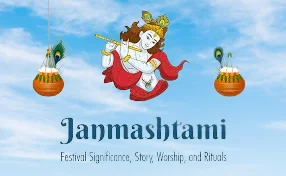
18. Tambulam (तांबूलं)
Now offer Tambula (Paan with betel nuts) to Shri Krishna while chanting following Mantra.
Pugiphalam Satambulam Nagavalli Dalairyutam।
Tambulam Grihyatam Krishna Yela Lavanga Samyuktam॥
Om Shri Balakrishnayanamah।
Pugiphala Tambulam Samarpayami॥
19. Dakshina (दक्षिणा)
Now offer Dakshina (gift) to Shri Krishna while chanting following Mantra
Hiranya Garbha Garbhastha Hemabija Vibhavasoh।
Ananta Punya Phalada Athah Shantim Prayachchha Me॥
Om Shri Balakrishnayanamah।
Suvarna Pushpa Dakshinam Samarpayami॥
20. Maha Nirajan (महा नीराजन)
Now offer Nirajan (Aarti) to Shri Krishna while chanting following Mantra.
Om Shriyai Jatah Shriya Aniriyaya Shriyam Vayo Jaritribhyo Dadati
Shriyam Vasana Amritattvamayan Bhavanti Satya Sa Mithamitadrau
Shriya Evainam Tat Shriyamadadhati Santatamricha Vashatkrityam
Santatyai Sandhiyate Prajaya Pashubhih Ya Evam Veda॥
Om Shri Balakrishnaya Namah।
Mahanirajanam Deepam Samarpayami॥
21. Pradakshina (प्रदक्षिणा)
Now offer symbolic Pradakshina (circumambulate from left to right of Shri Krishna) with flowers while chanting following Mantra.
Om Nabhya Asidantariksham Shirshno Dyauh Samavartata।
Padabhyam Bhumirdishah Shrotrat Tatha Lokan Akalpayan॥
Ardram Yahkarinim Yashtim Pingalam Padmamalinim।
Chandram Hiranmayim Lakshmim Jatavedo Ma Avaha॥
Yani Kani Cha Papani Janmantara Kritani Cha।
Tani Tani Vinashyanti Pradakshine Pade Pade॥
Anyatha Sharanam Nasti Tvameva Sharnam Mama।
Tasmat Karunya Bhavena Raksha Rakhsa Ramapate॥
Om Shri Balakrishnayanamah।
Pradakshinan Samarpayami॥
22. Namaskar (नमस्कार)
Now pay homage to Shri Krishna while chanting following Mantra.
Namo Brahmanya Devaya Gobrahmanahitaya Cha।
Jagadishaya Krishnaya Govindaya Namo Namah॥
Krishnaya Vasudevaya Haraye Paramatmane।
Pranatakleshanashaya Govindaya Namo Namah॥
Namastubhyam Jagannatha Devakitanaya Prabho
Vasudevatmajananda Yashodanandavardhana
Govinda Gokuladara Gopikanta Namostute
Saptasyasan Paridhayah Trissapta Samidhah Kritah।
Deva Yadyajnam Tanvanah Abadhnanpurusham Pashum॥
Tam Ma Avaha Jatavedo Lakshmimanapagaminim।
Yasyam Hiranyam Vindeyam Gamashvam Purushanaham॥
Namah Sarva Hitartaya Jagadadhara Hetave।
Sashtangoyam Pranamaste Prayatnena Maya Kritah॥
Urusa Shirasa Drishtva Manasa Vachasa Tatha।
Padbhyam Karabhyam Janubhyam Pranamoshtangam Uchyate॥
Shatyenapi Namaskaran Kurvatah Shrangapanaye।
Shata Janmarchitam Papam Tatkshanadeva Nashyati॥
Om Shri Balakrishnaya Namah।
Namaskaran Samarpayami॥
23. Kshamapan (क्षमापन)
After Namaskar, seek pardon from Shri Krishna for any known-unknown mistakes done during Puja while chanting following Mantra.
Aparadha Sahasrani Kriyante Aharnisham Maya।
Dasoayamiti Mam Matva Kshamasva Purushottama॥
Yantu Deva Ganah Sarve Pujam Adaya Parthivim।
Ishta Kamyartha Siddhyartham Punaragamanaya Cha॥
॥Shri Krishnarpanamastu॥
Dahi Handi
Dahi Handi (also known as Gopal Kala or Utlotsavam) is an entertainment and competitive event associated with Krishna Janmashtami, the Hindu festival celebrating the birth of Krishna. During the event, which takes place during August or September on the day after Krishna Janmashtami. It involves communities hanging a clay pot filled with yogurt (dahi), butter, or another milk-based food at a convenient or tall height. Young men and boys form teams, make a human pyramid, and attempt to reach or break the pot. As they do so, people surround them, sing, play music, and cheer them on. It is a public spectacle, and an old tradition.
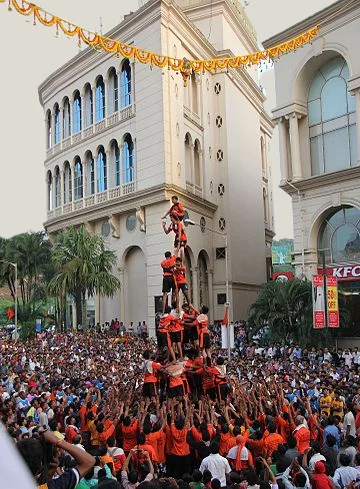
More recently, Dahi Handi was lavished with media coverage, prize money and commercial sponsorships. The event is based on the legend of the god Krishna along with his friends mischievously stealing butter and other curd from neighbouring homes in Gokul as a child. He is also called Makhan chor or butter thief. The neighbours would try to avert his mischief by hanging the pots high out of his reach, but Krishna would find creative ways to reach them.
The participants form a pyramid consisting usually below 9-tiers, and are given three attempts to break the earthen pot. Every year thousands of people and hundreds of govinda teams gather at Mumbai and Thane’s Dahi Handi events. As of 2011, the prize money for the events usually range between ₹1 lakh (US$1,300)–₹12 lakh (US$15,000) depending on the organizers and its sponsors. Each year, the prizes and scale of the celebrations increase due to the participation of political parties and commercialisation.
Janmashtami festival in India which commemorates Lord Krishna’s birth, has several interesting aspects to its celebration. Apart from the traditional Raslila, Dahi Handi brings out the playful side of Lord Krishna’s childhood as ‘Bal Gopal’. Dahi Handi is held on the second day of Janmashtami. It has an element of drama and suspense which makes it even more special. The festival is also called ‘Gopal Kala’ or ‘Dahikala’. It is a perfect time to enact the episode from Lord Krishna’s childhood when he would mischievously steal butter and curd butter from a pot hanging from the ceiling, as he was very fond of butter.
DahiHandi celebration is held mostly in Maharashtra, Goa and Gujarat. Some of the most famous locations in Mumbai are Dadar, Worli, Prabhadevi, Mazgaon, Lalbaug, Borivali and Thane. Apart from localities, several institutions also organize Dahi Handi programme with lower cash prizes. In Mumbai, close to 2000 Govindas compete for 4000 handis. It is also held in Shirdi and in Nashik. Even other states have caught on to the practice. In some states, it is also called ‘MatkaPhod’.
Dahi Handi tradition
Dahi Handi is a sporting event that mimics Lord Krishna’s winsome moments as a child. An earthen pot full of butter/dahi is hung from a great height and a group of people clamber on a human tableau to reach the top to break it. The participants called ‘Govindas’ form this tableau and one ‘govinda’ at the topmost tier breaks the pot hanging at a good height (generally 20 feet above the ground) with a slingshot.
The catch is that the Govindas must persist in their effort as people keep throwing coloured water to put resistance on them. Another challenge is to break the pyramid in a way that none of the participants are hurt. In some states, the pot is moved with ropes till the participants break the earthen pot. The symbolic significance is unity and triumph through collective effort. It also brings out the sporting spirit of the participants.
Dahi Handi celebration in Mumbai
In Mumbai the popularity of Dahi Handi celebrations has acquired huge proportions. From a local event to a major celebration that sees participation of Bollywood stars, Dahi Handi has caught media attention and gets live coverage on TV channels. In Mumbai, groups of Govindas shuttle from locality to locality to break the earthen pots in as many places as possible.
‘Govinda a la re ala, jaraa matki sambhal brijbala’ is an uplifting chant that keeps people’s spirit elevated and the general mood upbeat. It is the most catchy refrain in several songs on Janmashtami. A ‘pandit’usually performs the rituals before the event. The earthen pot is also filled with çurd, butter or ghee, dry fruits and sweets. A sweet preparation of yoghurt, rice and jaggery is offered to Krishna on this day.
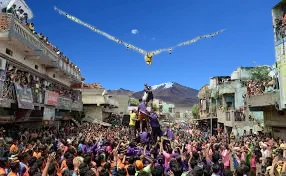
Dahi Handi has become competitive as several cash prizes are given away to the winners. Cash prizes depend upon how many tiers are displayed in the human pyramid, how professionally it is carried out and the celebrity attraction. Generally ‘mandals’ commence practice much in advance. Some localities offer prizes to the tune of Rs. 1 crore.
Film personalities attending the program are often a highlight. Banners announcing the cash prize for Dahi Handi are displayed almost everywhere cross the city. Celebrities performing in the event are a major draw as is a Bollywood actor showing a film trailer of a soon-to-be-released movie. Foreign troupes such as the one that came to Mumbai to perform in 2012 and train the ‘Govindas’ in acrobatics to make the pyramid professionally has also been welcomed.
For more articles from the general awareness section, visit HERE.
